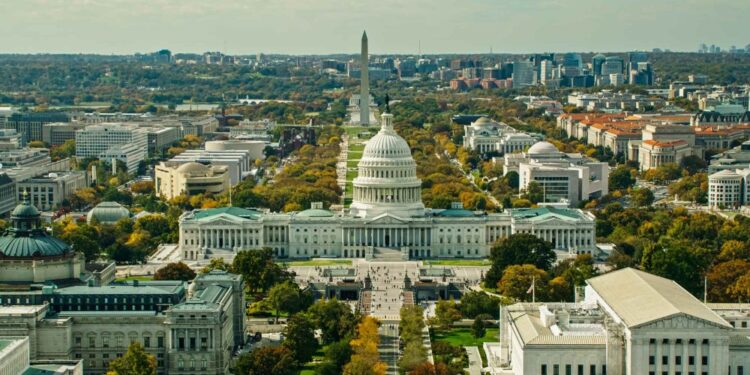Few questions stir as much intrigue in international relations as the true extent of the United States’ power. For over a century, the U.S. has stood at the forefront of global leadership – shaping wars and peace treaties, commanding financial systems, dictating diplomatic norms, revolutionizing technology, and exporting its culture to every part of the globe. But how powerful is the United States in measurable terms? Is it still the undisputed global hegemon, or has its supremacy been challenged by rising powers like China?
Assessing power requires a multidimensional lens – military dominance, economic size, geopolitical influence, technological capacity, cultural reach, environmental impact, and ideological leadership. When examined through this holistic framework, one conclusion becomes clear: while the U.S. faces growing competition, it remains the most powerful and influential nation on earth.
1. Military dominance
The United States wields the most advanced and far-reaching military apparatus ever constructed. Its annual defense budget – over $1 trillion, larger than the combined military spending of the next ten nations – reflects an enduring commitment to global force projection.
| Category | U.S. capability | Global ranking |
| Defense budget | ~$1 trillion | #1 |
| Aircraft carriers | 11 active nuclear carriers | #1 (China has 3) |
| Overseas military bases | 750+ across 80 countries | #1 by a vast margin |
| Nuclear arsenal | ~5,400 warheads | #2 after Russia, but with superior delivery systems |
| Global military alliances | NATO + security treaties with Japan, South Korea, Australia | Unmatched |
The sheer reach of the U.S. military is unmatched. It can deploy troops to any continent within hours, enforce sea lanes across chokepoints like the Strait of Hormuz and South China Sea, and sustain wars thousands of miles from its shores as demonstrated in Iraq and Afghanistan. Moreover, U.S. military partnerships – particularly NATO, the world’s most powerful alliance – amplify its influence far beyond unilateral force.
2. Economic dominance
The United States controls the beating heart of the world economy. Its GDP exceeds $30 trillion, making it the largest single economy on Earth, ahead of China even in nominal terms. But size alone does not explain its power – structure and control mechanisms do.
Why the U.S. economy holds systemic power
- The U.S. Dollar is the Global Reserve Currency: Over 60% of global central bank reserves are held in dollars. Most international trade – including oil – is denominated in USD.
- Wall Street dominance: The New York Stock Exchange (NYSE) and NASDAQ hold over 40% of global stock market capitalization.
- Sanctions power: The U.S. Treasury can cripple adversaries by cutting access to SWIFT, freezing dollar assets, or targeting companies through secondary sanctions.
Countries as powerful as Russia, Iran, and Venezuela have experienced economic isolation due to U.S. sanctions. Even European banks and corporations routinely comply with U.S. restrictions – not out of allegiance, but necessity. The U.S. effectively governs parts of global finance, making economic influence one of its most potent tools of power.
3. Technological and innovation leadership
From Silicon Valley to NASA, the United States remains the innovation capital of the world. The vast majority of the technologies powering the digital age – the internet, smartphones, artificial intelligence algorithms, semiconductors, GPS – were either invented or commercialized in America.
Control of strategic technologies
| Sector | U.S. dominance |
| Big tech | Apple, Microsoft, Google, Amazon, Meta – five of the world’s largest companies. |
| AI research | Home to OpenAI, NVIDIA, Anthropic, Google DeepMind (dual-base). |
| Aerospace | Boeing, SpaceX, Lockheed Martin – leaders in satellite and rocket systems. |
| Biotech & pharmaceuticals | Pfizer, Moderna, Johnson & Johnson – global medical powerhouses. |
| Semiconductor IP | U.S. firms control key chip architecture used globally. |
The U.S. controls software ecosystems, cloud infrastructure, microchip patents, and internet protocols. Even when China leads in hardware manufacturing, it heavily relies on U.S. intellectual property. In cyberwarfare, digital surveillance, and quantum research, America remains ahead – although the gap is narrowing with China in fields such as 5G and surveillance AI.
4. Diplomatic and political influence
The influence of the U.S. is not merely rooted in force or economics – but in its ability to set the rules of international engagement. Its post–World War II leadership in forming the United Nations, NATO, World Bank, and International Monetary Fund has allowed it to institutionalize leadership into global frameworks.
Soft coercion through diplomacy
- Veto Power in the UN Security Council: Along with Russia, China, UK, and France.
- Security Treaties with over 50 nations: Including Japan, South Korea, Australia, Philippines, Qatar, and Denmark.
- Leadership in global agenda-setting: Whether climate change summits or trade policies, U.S. endorsements shape outcomes.
Even in strategic rivalries, nations hedge toward the U.S.. India, Vietnam, Saudi Arabia, and Turkey – all non-aligned or previously non-Western blocs – now court Washington as a balance against China or Russia. America’s ability to build coalitions, broker peace deals, and dictate negotiation terms is still unmatched.
5. Cultural dominance
Military and economic power explain only part of America’s influence. What truly separates the United States from past empires is its cultural colonization of the world.
Global cultural reach
- Hollywood films dominate international box offices.
- American music – hip hop, pop, rock – defines global soundtracks.
- Fast food brands like McDonald’s, KFC, and Starbucks are cultural symbols.
- English, largely spread by American media, is now the global lingua franca.
Beyond entertainment, American values of individualism, free speech, capitalism, and liberal governance are woven into global youth culture. Even critics of U.S. policy consume American media and adopt its fashion and slang. No other nation – not even China with its Confucius Institutes nor Russia with RT – has managed to rival American soft power.
6. Space and cyber dominance
The United States is also leading in domains that will define future supremacy.
Space power
NASA, along with private players like SpaceX, has reasserted U.S. control of orbital infrastructure. America maintains the largest satellite fleet, powering GPS, intelligence gathering, global communications, and weather systems.
Cyber power
U.S. agencies like NSA and U.S. Cyber Command conduct both surveillance and offensive cyber operations. American tech companies control operating systems, cloud storage, and mobile ecosystems – giving Washington unparalleled ability to monitor or restrict information flow globally.
Challenges to U.S. dominance
Despite overwhelming superiority, the United States is not invincible. Key challenges include:
- China’s rapid ascent, especially in manufacturing, AI surveillance, and Belt & Road investments.
- Domestic polarization: Political instability threatens long-term foreign policy continuity.
- Debt and economic inequality: Although manageable now, long-term sustainability is under scrutiny.
- Shifting global alliances: Some nations resist U.S. interventionism, preferring multipolar cooperation.
However, while China may rival U.S. power, it has yet to match America’s global trust networks, cultural appeal, or alliance structures.
Final assessment
Virtually every metric, theUnited States is the most powerful country in the world. While its relative dominance has narrowed due to the rise of China and regional coalitions, its absolute power remains unmatched.
- Militarily, no country can project force globally as efficiently.
- Economically, the dollar is still the lifeblood of global trade.
- Technologically, America remains the epicenter of innovation.
- Diplomatically, it sets the rules rather than follows them.
- Culturally, it defines modernity itself.
If power is defined as the ability to influence or control outcomes beyond one’s borders, then the United States remains the central axis around which the world operates. Other nations may rise – but for now, the U.S. is still the world’s premier superpower.















